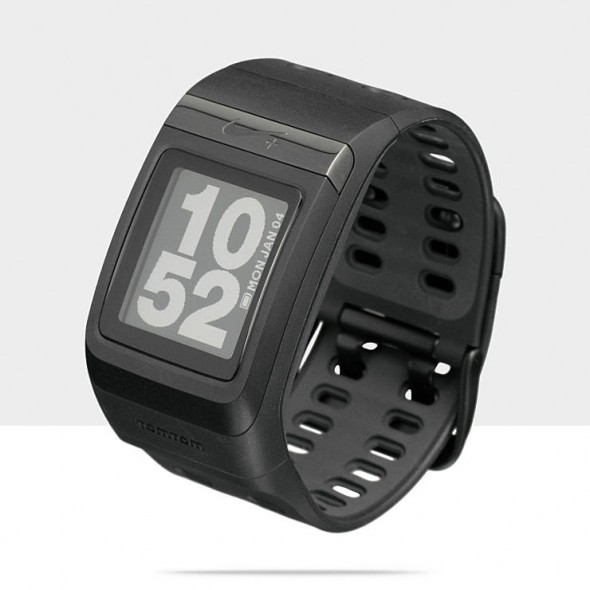

A little over a year ago we took the kiddo’s to a “Girls on the Run” event. I ran a 5k with Royce, and remember how willing and able she was to do the jaunt faster than me. I kept thinking “why can’t we walk a little and enjoy the day?” and “I hope there are doughnuts at the finish line.”
She was 10 at the time, I was 38. Not a good indicator of my potential to run a marathon.
Last summer I decided to try to run a marathon again, I’ve written a few posts about it here, here, and here. A Friend of mine helped me pick a schedule and that was the catalyst. Two Sunday’s ago I just completed my second marathon, so by no means am I an expert. In fact, I know practically nothing. Which is why I feel qualified to give advice to only those who know absolutely nothing. 🙂
In the event this might help someone, I did learn some lessons along the way that I wish I had known in advance. So here goes…Starting with the most awkward one–and hilarious–first.
1 Men…Tape. Your. Nipples.
Yes, I’m serious. While riding the bus to the start line for the California International Marathon in Sacramento I was sitting with an ultra-marathoner who peppered me with advice en route, including asking “Okay, tell me you taped your nipples–right? Because it’s pouring rain and you’re going to be in brutal pain at the finish line if not.” I immediately grabbed tape from a guy a few rows up. That was the one part of my body that wasn’t in pain that day.
Next to finishing the marathon, your second objective should really be to look halfway decent whilst you cross the finish line. 🙂 And I can assure you, if you’re a dude that has blood streaks coming down from your white running shirt as you’re at mile 25, the only thing going through the mind of bystanders is “Holy crap, are those dudes nipples BLEEDING?” In addition to the visual disturbance, it’s pretty painful too. I didn’t really believe this could happen until I saw it firsthand at the Phoenix Rock ‘n Roll marathon three weeks ago, at mile 25, to a guy in a white shirt…Of course.
While there remains some debate as to whether a persons body is really designed to run for 26.2 miles, there is no debate that a mans nipples were not.
2. Just start the training.
You could spend hours and hours and hours picking plans, reading about what to do, how to do it, and never even get started. If you want to run a marathon, take 10-minutes, do a google search, pick a plan and just get started. Some prefer plans from Jeff Galloway and Hal Higdon. They’re both fine (I used neither). Just get a schedule and go, preferably running at least four days a week though I only did three. I’ll explain my rationale later. Stay consistent. You can miss a few workouts, but don’t let that become a pattern–the consistency is critical not only physiologically, but psychologically.
3. Use the NikePlus app or a NikePlus watch (preferred).

For my first marathon I used the NikePlus app on my iPhone, which is solid but the distance calculations during the run are not accurate–usually under by about 10-15% for me, which means in all your training you THINK your pace is much faster than it actually is. Because that was my only real measurement for training, it was frustrating to figure this out on marathon day. I recently purchased a NikePlus running watch with the TomTom GPS built into it, it is wildly accurate and it’s all I use now.
4. Mimic marathon day on your long runs.
Usually you’ll do your long runs on a Saturday or Sunday. Try to do these earlier in the day, because that’s when you’ll be running the marathon. And fuel your body the way you intend on marathon day. Prior to a long run I now drink a protein shake, eat a banana with almond butter, and then I’ll fuel every five miles (EVEN IF YOU DON’T FEEL LIKE IT!) with GU tri-berry flavored energy gels. I didn’t do this for my first marathon, learned the hard way and bonk’d pretty hard at mile 18 in the CIM.
5. Don’t do ANYTHING new on race day.
Don’t try new weird yoga-pose-stretches, don’t wear new shoes, don’t try some new super jungle-berry drink, don’t eat a new type of food, don’t wear compression socks. If you ate big macs prior to all your long training, well, then onward with your habit. Don’t switch it up on marathon day (pray tell, you don’t eat Big Macs, do you?).
6. Buy great shoes that fit how you run.
I used to buy my running shoes with a strong focus on how good they look. I had no idea that different running shoes had different structures to support a negative camber, heavy heel striking, etc. Go to a running store where they will watch you run and guide you into the right pair of shoes that fit how you run. Now, I buy shoes based purely on how they fit. If any of you have seen my running shoes, you can attest it’s no longer on looks.
7. Lose weight.
I started running last summer close to 240lbs (EEEEEEEEKKKKK!). This morning I weighed 202. Every ten pounds reduces your per minute mile by 20-seconds. For me, that’s like 1:20 per mile with a 40lb difference, or 35 minutes different in a marathon. Not to mention the toll that it saves on the body, and how you look and feel. Running alone won’t cut it, losing weight is 70% diet. I like the Paleo diet, but find something that works for you.
8. Crosstrain.
So the reason I ran about 3x/week was because I spent the other 3x/week doing CrossFit. Ideally, I should have run more. But I knew I needed to lose weight, and build muscle mass. I noticed some of my greatest gains in speed when I started doing CrossFit.
9. Stretch. Stretch. Stretch some more.
I am extremely tight, and am a horrible stretcher. Not stretching pre, and particularly post, runs is killa. Killa. KILLA. You need to stretch, hard core. Throughout the day. Being too tight can lead to a host of injuries that will take you out of your marathon. I hate stretching and I’m still lousy at this, but it’s pretty critical.
10. Prevent or delay bonking.
When you get to mile 20, you’re about halfway. Those last 6 miles are more difficult than than the first 20. To put this in start-up terms, the first 20 miles are a little like your brilliant sexy new start-up idea–it’s genius, wow that was easy! And now the next few years are the hard work of executing. That’s when mile 20 starts. Your muscles will have probably consumed all its glycogen at this point, and it’s going to be a big mental game to finish strong. A few things that will help reduce or potentially prevent hitting the wall:
a) Don’t go out too fast. The first mile or two is filled with adrenaline. Intentionally run slow out the first few miles.
b) Gatorade or water at every station, even if just a bit. Take a GU energy gel prior to the start of the race, then every 45-minutes thereafter. If you wait until you feel like you need it, at say mile 15, it’s too late and your glycogen stores are shot–or close to it–and you can’t replenish (note: I realize this conflicts with a lot of Paleo beliefs–and while I’m pretty strict on Paleo, this is one area where I deviate, at least for now).
c) Run the first half at or below your marathon pace. Speed it up second half. Also called “reverse splits.”
And an 11th bonus one, if you’re thinking of running multiples.
Give enough time between marathons.
The night I got home from the Sac marathon, I was like “Cool, I got this. Let’s sign up for the Phoenix Rock ‘n Roll marathon in six weeks.” Not a great idea. Your body needs about two weeks to recover post-marathon, then two weeks before the race you should begin your tapering process. Basically, that leaves two weeks for training in a six week window. You can’t really make meaningful improvements during this time and there’s high risk of injury in this window. Most running experts have told me a good number of marathons to target is 2-3/year. I completed the Phoenix Rock ‘n Roll marathon, but wouldn’t time it that way again.
Yep, I know some people can run marathons within a week or two of each other. These people are called freaks of nature. It is unlikely you are lucky enough to be one of them.
This year, I hope to run two more marathons, and then several half marathons along the way (including the NYC half this March). My goal for the summer marathon is to get down in the 3:40’s, and then by fall to run a sub 3:30 though for me that would be pretty fast and will have to make more adjustments, including:
1. Using RunCoach, a website (about $20 a month) that designs a custom running plan based on algorithms and previous runs, incorporates tempos, drills, etc.
2. Dropping 12lbs. I don’t think there’s a good chance that I can run a sub 3:30 without dropping my weight down to 190.
3. Figuring out optimal fueling for my body, and a more strict regimen of the Paleo diet during the week–fewer bananas, more sweet potatoes.
4. Much more stretching. Like a banshee.
5. Moderately–if not radically–improved running form. Started this two weeks ago. I feel like I’m going backwards, but I know it’s the right thing to do.
There you have it. 10 tips plus a bonus from someone who knows very little about marathoning but has learned a few things along the way. My best advice to anyone thinking about it is just start. Create a simple plan. And make it happen. You’ll be glad you did, and in the process, you might even develop a healthy new addiction habit.
No doubts, take Lasix only as prescribed by your doctor. Levitra is one of the best-known medications of all day. What is the most significant info you must study about levitra vs cialis? Most doctors say the effectiveness of Levitra is well documented. Absolutely, a sexual problem refers to a problem during any phase of the sexual response cycle that prevents the individual from experiencing satisfaction from the sexual life. Whilst sex is not vital for good health, it�s doubtless great for anyone. Why it happen? What kinds of professionals treat sexual diseases in men? A common class of antidepressants, which include Zoloft � can kill the mood in bedroom.

Great information . . . thanks so much! One of my goals is to run marathons and you have good insight for those of us who are pre-beginners!
Hi Laura, thanks for reading and posting your comment. Pre-beginners, I love the term. I am still one! Best of luck, would love to hear about your journey! ~Raz